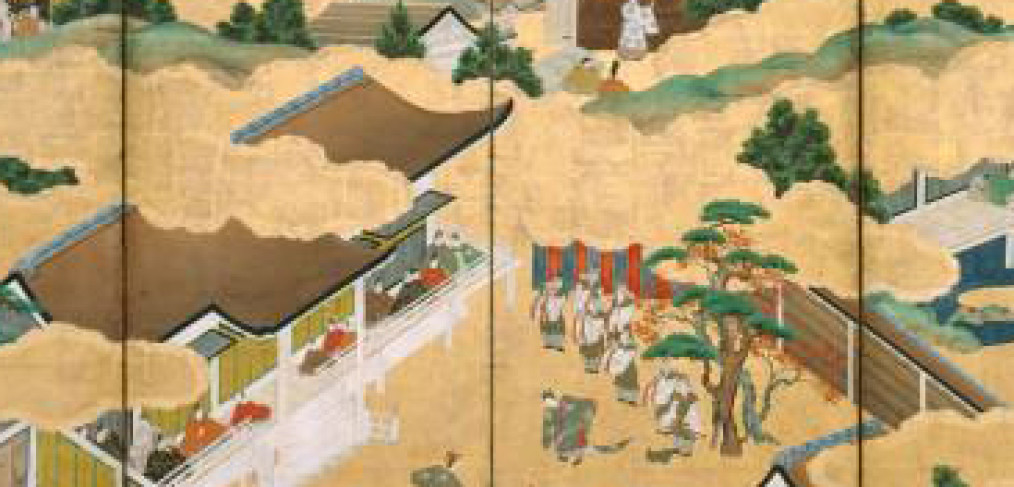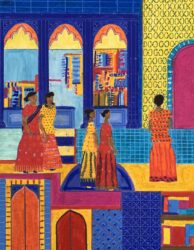
Arata Isozaki: Western drawing veiled by Oriental taste
Author: Marta Martinoglio
Arata Isozaki likes call himself, ” bridge between East and West” and is defined a great connoisseur of western culture. It is visible in multitude of the West references of his architecture, away more and more from the pure Japanese style of his contemporaries.
An admirable example of his Western influence can observe it in his famous drawings for the building Center Tsukuba, Ibaragi, Japan, 1979-83. The project was realized for a museum of contemporary art in Tokyo’s outskirts , Gunma Prefecture.
Isozaki presented a big format hand drawing made by graphite of classical style architecture, citing directly Campidoglio Square, hybridized with modern shapes of cubes and grids.
The drawing technique used refers to 18th century British artist Joseph Michael Gandy. The painting which he makes references is “Soane’s Bank of England as a ruin”, 1830. It reflects J.M. Gandy’s fascination with Roman ruins and his architectural fantasies owe a clear debt to Piranesi.
To achieve the impression of incomplete, unfinished, according to pure Japanese taste, Isozaki used European 18th century graphic custom of setting a context of ruins.
Tsukuba Center is a composition of Western objects (square and columns) but his portrayal diverges from the principles of perspective and clarity graphic drawings typical of West, but rather a form of Oriental aesthetic sense.
During an interview with a co-worker of Arata Isozaki, Professor Makoto Kikuchi, he reveled that after he finishing the precise and rigorous drawing, Isozaki decided to take from him his pencil and dimming parts of drawing with a second layer. Trough long past pencil, on already completed drawing, Isozaki misted and veiled precise lines with dark graphite.
This gesture express the pure Japanese taste for veiled, unconcealed, obscured and vacuum. The appreciation of vacuum or void descended from religious experiences of Japanese oldest tradition.
Indeed Isozaki used Japanese style ‘s techniques of representation as the darkening of a part of the drawing (which usually is represented through dense white clouds or fog banks) and a sense of unfinished of the drawing.
Those features are visibly perceptible in one of the most famous artistic works of Japanese history of art, “ Tale of Genji”, 1600. In this painting scroll, concept of vacuum assume materially form of dense white clouds from which are visible houses in isometric (another distinctive feature of Japanese artistic representation). So in the scroll buildings, represented in isometric view from above, with no roof, appear here and there through large gaps (clouds).Within the domestic space it is therefore possible to read the dynamics of tale scene by scene.
Using this technique of using vacuum spaces the observer is forced to image what is not visible, the most veiled and mysterious scene, becomes the center of attraction.
In Tsukuba’s drawing the architectural complex is partly hidden by a first level graphite fog which create an emptiness and unfinished sense.
The concept of emptiness in Western tradition has value primarily negative, shortage, whereas in Japan plays a positive role.
Explains Gian Carlo Calza: “Grasp the real vacuum value may serve to divert attention from the concept note of emptiness that can leave inconvenience, horror vacui, a concept more familiar to us to” silence “. The silence evokes a feeling of peace, tranquillity, serenity, non-thinking, no jumble of noises or worry.(…) If we swing our experience between the concept of emptiness and the silence, here it is that the vacuum is no longer a negative: pictorially vacuum can be a fog that interrupt the vision, but also becomes the illusion of a world and that the observer can imagine and it is trying to imagine that takes a process of personal training: you make an effort, you become creative. ”
This drawing of Arata Isozaki summarizes his main attitude, as well as his main feature as architect: operate between European architectural content and Japanese aesthetics (as in Tsukuba Center) or vice versa.
As an architect bridge between West and East, the Tsukuba Center’drawing plays a perfect role of hybrid between two cultures aesthetic: use of European archetypes plus taste of the ruins in the drawing representation on one hand, and Japanese use of vacuum and removal from drawing as well as unfinished sketched on the other.
–Nationality: Italian
–Contacts: marta.martinogliogmail.com
–City and date of birth: Turin 1990
-Year: 2016
-University/Institution/Competition: Moscow Institute of Architecture and Politecnico di Milano








